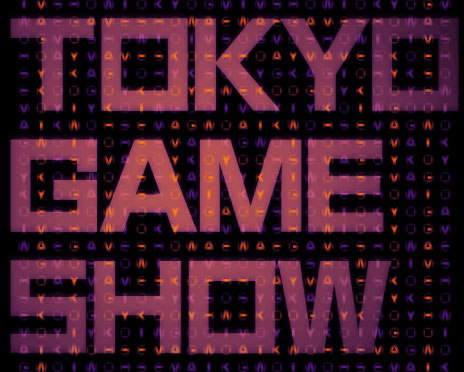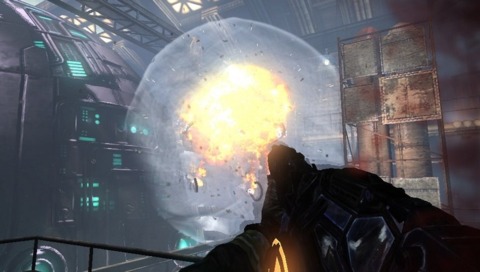Arcades, holograms, cloud computing the future of gaming - Square Enix CEO
TGS keynote address sees Yoichi Wada assess the changing industry landscape as Sony reps show off Resistance for the PS Vita, confirm November release for PlayStation Suite SDK.
TOKYO--The Tokyo Game Show kicked off today with a keynote address on the future of the gaming industry from three of Japan's leading video game industry figures. Square Enix CEO and Computer Entertainment Supplier's Association chairman Yoichi Wada, Sony Computer Entertainment worldwide studio president Shuhei Yoshida, and Sony Computer Entertainment senior vice president Yoshio Matsumoto took to the stage in the Makuhari Messe convention centre this morning to speak about evolving business models in the industry and the need to create new gaming experiences as the gaming audience continues to grow and diversify.

Wada began his address with a brief history of the gaming industry, looking as far back as 1975 and tracking important changes in hardware development. He outlined his belief that there is a steady undercurrent of revolution in the gaming industry driven by the different ways that people play games today and the arrival of console online services and devices like the iPhone. The market has now expanded significantly to include social games, casual games, and cloud gaming.
Wada went on to say that in the past 20 years, the gaming industry has established a set of rules and regulations but that in the future, these will need to be redrafted to accommodate a new generation of gamers who have not grown up with this existing framework. Wada then moved on to talk about the gameplay experience, showing a graph that measured the correlation between communication, processing power, input, and output. Around the year 2000, Wada said, the emphasis shifted from processing power to other factors. The industry now has to accommodate customer needs, and processing power is no longer the sole driver.
Wada said the real shift came with the release of Nintendo's original DS console, which put the emphasis on input and paved the way for touch pads, voice control, and finally, motion control. Wada also expressed his view that there is a correlation between events happening in the gaming industry and events happening in the outside world. For example, touch panels are now featured on general-purpose machines, not just gaming machines. This emphasis on input continued until around 2010, when customers stopped investing time in trying to make the perfect gaming environment and embraced the multitude of different gaming platforms. Wada said the shift then moved towards communication, where it lies now.
Wada then said he believes the competition is no longer between dedicated gaming machines, but rather between general-purpose machines, which means game developers need to focus on what kind of gaming experience they want to provide. In the end, however, it will come back to the dedicated gaming devices. Wada noted that the industry will eventually move from 3D displays to holograms, and then possibly to virtual worlds, but it will take time to reach that point. When this happens, we will see the new technology evolve in game arcades first, as has been the case in the past.
Wada then moved on to talk about game industry business models, saying that the consumer now has the pricing power and pays to his or her satisfaction (for example, the freemium model). While it used to be that the supplier or seller controlled the price, now the price-determining power has shifted to the consumer. According to Wada, developers need to make sure that they review their pricing structure to keep this in mind.
There has also been a shift in what consumers find valuable in gaming experiences. Wada explained that the industry has moved on from provided data to user-generated data and from personal data to community data. People are willing to pay for something that cannot be easily copied or reproduced. Customers are only finding value in user-generated data, personal data, and community data.
Wada closed his address by focusing on the power of the cloud, saying it will positively affect the future of the gaming industry, particularly by changing all the rules and laws that drive current industry business models.

Sony Computer Entertainment worldwide studio president Shuhei Yoshida and senior vice president Yoshio Matsumoto then took to the stage and began their presentation with a PlayStation Vita introduction video. Yoshida began by saying he wanted to talk about the future of the Vita, with everything from software to hardware to the new applications the new console will run.
Matsumoto then talked about his involvement in the development of the Vita, briefly recapping the announcements made at yesterday's Sony pre-TGS press conference.
A short video then showed off a few of the Vita's social applications as well as gameplay footage from some of the console's launch titles. It also emphasised the Vita's capability to cross-play with the PlayStation 3 and other Vita consoles and its augmented-reality feature.
Yoshida then did a live demonstration of Resistance: Burning Skies for the Vita, demonstrating how users will be able to connect to the online Resistance community site via the Vita's Web browser. After briefly explaining the game's story, Yoshida made his way through an underground facility and demonstrated how users will be able to change weapons using the in-game menu.
Yoshida then moved on to talk about the Vita's augmented-reality feature, which will work much like the PlayStation Eye camera. The first augmented-reality application for the Vita demoed during the keynote address was Wide Area AR, which uses a marker system much like the EyeToy. However, the Vita will use more than one marker (with the option of single AR card or multiple cards), meaning users will have a wider area to use as a playing field. The second application is called Markerless AR, which will let users simply take the real-world environment and change it into a playing field. The onstage demo showed a busy city street captured by the Vita, which then opened up a portal in the road to reveal a small animated monkey. According to Sony, the Vita will be able to recognize real-world markers (such as tables and chairs) and use these to determine the playing field.
Yoshida then did a real-time demonstration using a TGS brochure--he held up the Vita to the brochure and touched the screen to open up another portal and reveal the same animated monkey.
Yoshida then moved on to talk about the link between the Vita and the PS3, reiterating the cloud save feature and the running of cross-platform play between the two consoles. He demonstrated playing Killzone 3 on the Vita using remote play and then performed another small demo to show off the multiplayer remote play using Little Big Planet; during this latter demo, another Sony representative joined Yoshida onstage and played with a DualShock 3 controller while Yoshida played using the Vita.
During the demo, Yoshida used the touch panel on Vita to draw lines on the screen to direct his character while the other Sony representative played on as normal.
The last item talked about in the presentation was the PlayStation Suite, a cross-platform software framework that aims to make games available on multiple Sony devices including Android OS mobile phones, Sony tablets, and the Sony Xperia Play.
Yoshida revealed that the PlayStation Suite software development kit (officially titled PlayStation Suite SDK) will become available to developers this coming November and will be launched in nine countries including Japan, the United States, Canada, the United Kingdom, France, Germany, Italy, Spain, and Australia, with more countries to follow.
Through the service, developers can create content for PlayStation Certified devices, as well as for the Vita. Yoshida also revealed that Sony plans to provide a variety of content for PlayStation Certified devices through the PlayStation Store from the end of October, starting with original PlayStation games.
Got a news tip or want to contact us directly? Email news@gamespot.com
Join the conversation